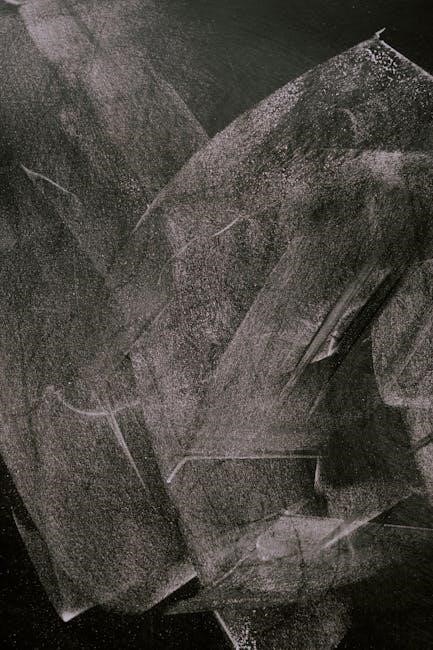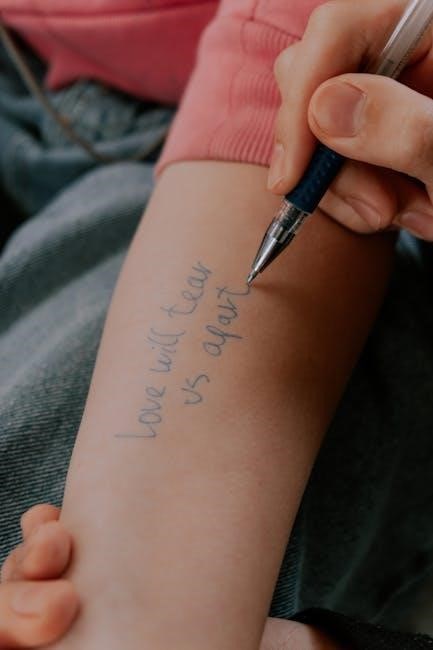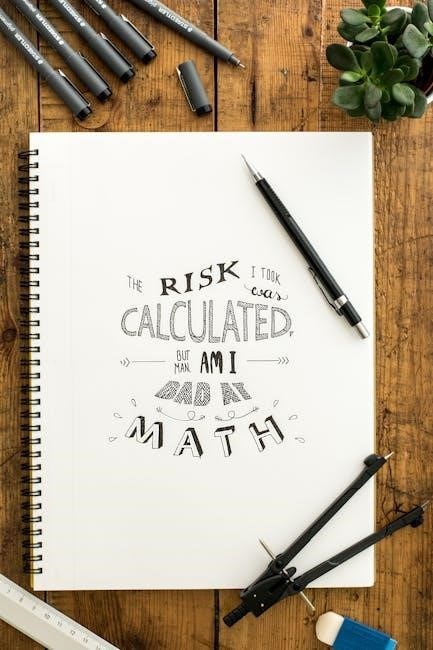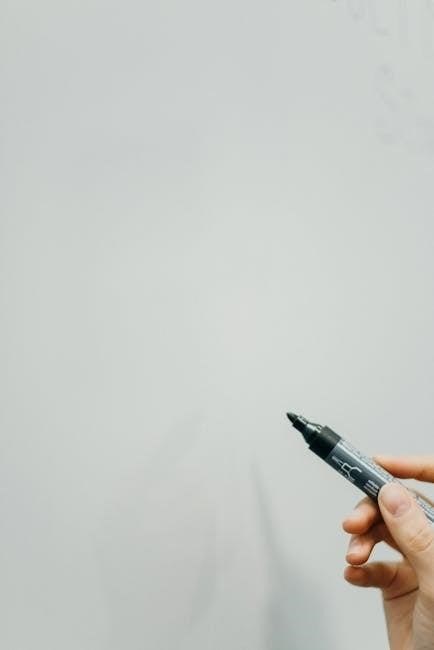drawing words and writing pictures pdf
Combining words and pictures creates comics‚ taught systematically in a course‚ guiding students through narrative creation within single drawings‚ using structured syllabus and skill orchestration effectively always.
Definition and Purpose
The concept of drawing words and writing pictures refers to the art of combining visual and textual elements to convey meaning and tell stories. This approach is often used in comics‚ graphic novels‚ and other forms of sequential storytelling. The purpose of drawing words and writing pictures is to create a unique and engaging form of communication that leverages the strengths of both visual and textual elements. By combining images and text‚ creators can convey complex ideas and emotions in a way that is both intuitive and expressive. The definition of drawing words and writing pictures is closely tied to the concept of visual literacy‚ which refers to the ability to interpret and create visual messages. This skill is essential for effective communication in a variety of contexts‚ including education‚ marketing‚ and entertainment. Using images and text together can help to clarify complex ideas and make them more accessible to a wider audience‚ making it a powerful tool for communication and storytelling.
Authors and Their Contribution
Jessica Abel and Matt Madden are the authors of the textbook Drawing Words and Writing Pictures‚ which provides a comprehensive guide to creating comics and graphic novels. They have made significant contributions to the field of comics and education‚ and their work has been widely recognized and acclaimed. The authors’ approach to teaching comics creation is structured and systematic‚ making it accessible to students of all levels. They have developed a range of educational resources‚ including lesson plans and student guides‚ to support teachers and students in learning about comics and graphic novels. The authors’ contribution to the field of comics education is notable‚ and their work has helped to establish comics as a legitimate and valuable form of storytelling and communication. Using their textbook and other resources‚ students can learn the skills and techniques needed to create their own comics and graphic novels‚ and to develop their own unique voice and style. Their work continues to inspire and educate new generations of comics creators and enthusiasts.

Key Concepts and Skills
Creating narrative and orchestrating skills using comics techniques and word-image juxtaposition effectively always online.
Narrative Creation
Narrative creation is a crucial aspect of drawing words and writing pictures‚ as it involves guiding students through the process of creating a story within a single drawing. This skill is essential for creating comics‚ as it allows artists to convey complex ideas and emotions through a combination of words and images. By using a structured syllabus‚ students can learn to create narrative within a single drawing‚ and then build on this skill to create more complex stories. The textbook provides a comprehensive guide to narrative creation‚ including tips and examples to help students improve their skills. Using visual elements and storytelling techniques‚ students can create engaging and effective narratives that draw the reader in. By mastering narrative creation‚ students can take their comics to the next level and create stories that are both visually striking and emotionally resonant. Effective narrative creation is key to making comics that resonate with readers.
Word-Image Juxtaposition
Word-image juxtaposition is a fundamental concept in drawing words and writing pictures‚ referring to the relationship between text and images in comics. This technique allows artists to convey meaning and tell stories in a unique and powerful way. By combining words and images‚ artists can create complex and nuanced narratives that engage the reader on multiple levels. The textbook provides guidance on how to effectively use word-image juxtaposition‚ including tips on how to balance text and images‚ and how to use visual elements to enhance the story. Using visual metaphors and symbolism‚ artists can add depth and meaning to their work. Word-image juxtaposition is a key element of comics‚ and mastering this technique is essential for creating effective and engaging stories. By learning to harness the power of word-image juxtaposition‚ artists can take their comics to the next level and create work that is both visually striking and emotionally resonant‚ making it a crucial aspect of the comic creation process.

Lesson Plans and Resources
Guides and plans are available‚ including chapter-by-chapter resources‚ to support learning and teaching‚ providing helpful tools always.
Drawing and Writing Lesson Plan

The drawing and writing lesson plan is designed to encourage students to use drawing as a tool to enhance their writing skills‚ by using pictures to generate ideas and add detail to their writing. This approach is particularly helpful for young students who may find it easier to express themselves through drawing rather than writing. The lesson plan provides a structured approach to teaching drawing and writing‚ with activities and exercises that help students develop their skills in both areas. By combining drawing and writing‚ students can learn to communicate more effectively and express their ideas in a more engaging and creative way. The lesson plan is flexible and can be adapted to suit the needs of different students and classrooms. It is an effective way to teach students the skills they need to become confident and creative writers and artists. Using visual aids and interactive activities can also enhance the learning experience.
Chapter-by-Chapter Student Guides
The chapter-by-chapter student guides for Drawing Words and Writing Pictures and Mastering Comics provide valuable resources for students to enhance their learning experience. These guides offer tips and suggestions for preparing for each chapter‚ as well as links and downloads to additional materials. Students can also view examples of other students’ work on various activities from the books‚ along with comments and suggestions from the authors. The guides are designed to help students stay on track and get the most out of the course. By following the guides‚ students can develop a deeper understanding of the material and improve their skills in combining words and pictures to create comics. The guides are available online and can be accessed by students at any time‚ making it easy to review and reference the material. Using the guides‚ students can work at their own pace and review the material as needed to ensure they understand the concepts.

Additional Resources
Online resources include a Powerpoint presentation and PDF poster‚ providing extra support and materials for learning and teaching effectively always online.
Powerpoint/PDF Presentation
A Powerpoint/PDF presentation is available‚ based on Jessica’s 2002 strip‚ What is a Graphic Novel?‚ also available as a PDF poster or handout‚ providing a useful resource for teaching and learning. The presentation can be used to introduce students to the concept of graphic novels and comics‚ and to explore the ways in which words and pictures can be combined to tell stories. The PDF poster or handout can be used as a reference guide‚ or as a starting point for discussions and activities. The presentation and accompanying materials are designed to be flexible and adaptable‚ and can be used in a variety of educational settings. By using these resources‚ teachers and students can gain a deeper understanding of the art of combining words and pictures‚ and can develop their skills in creating comics and graphic novels. The presentation is a valuable addition to the Drawing Words and Writing Pictures course.
